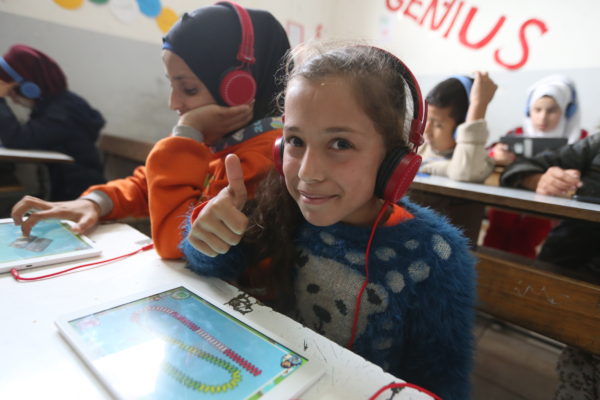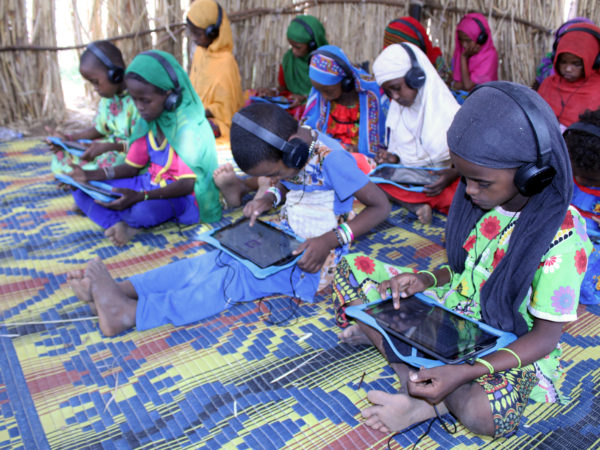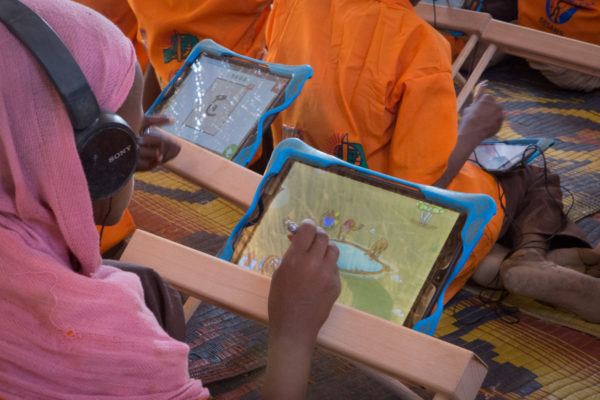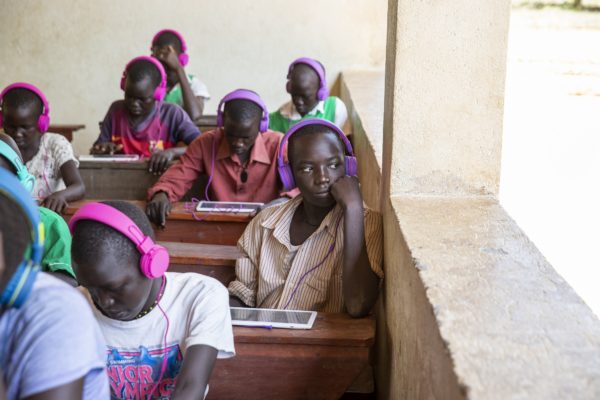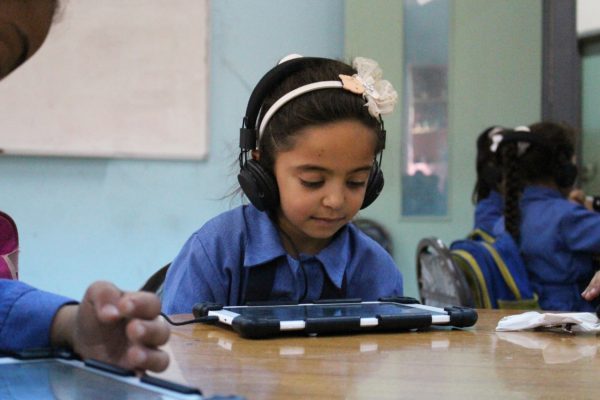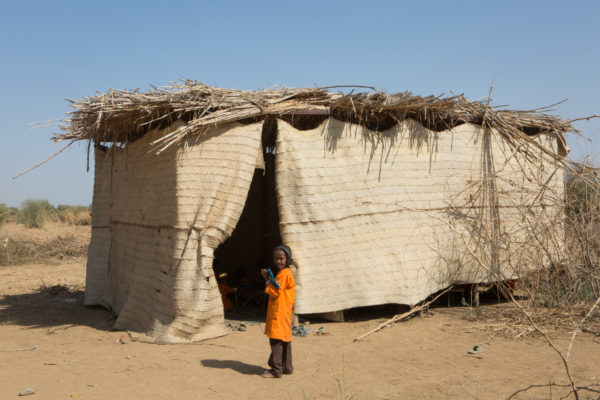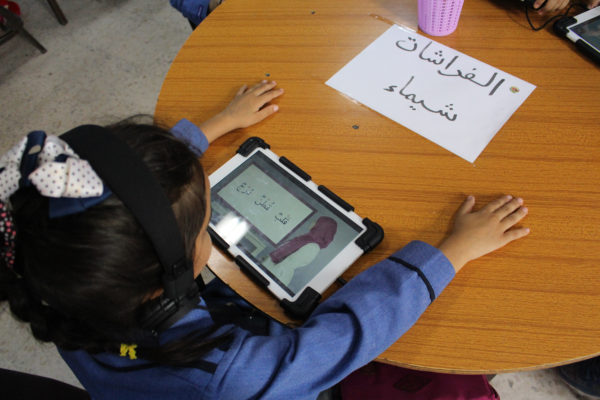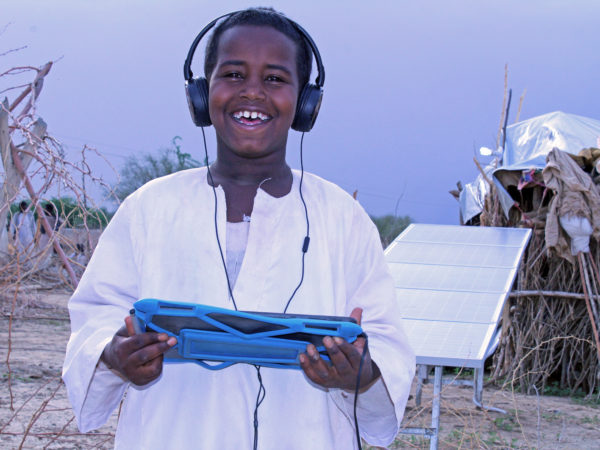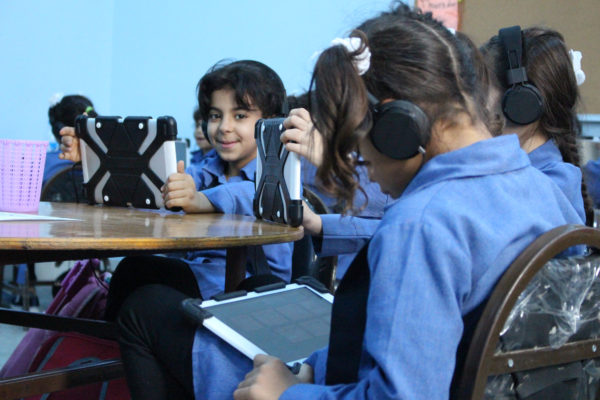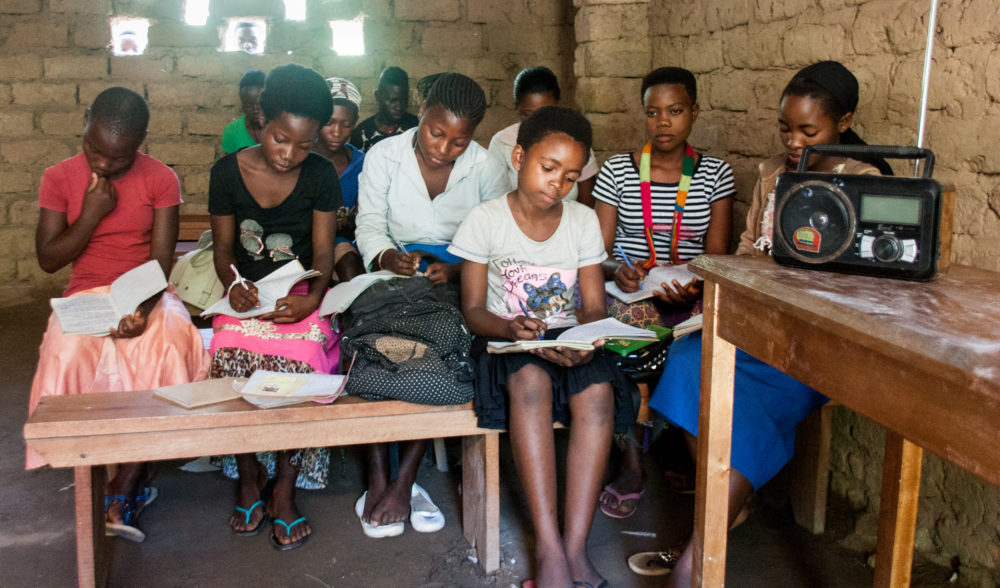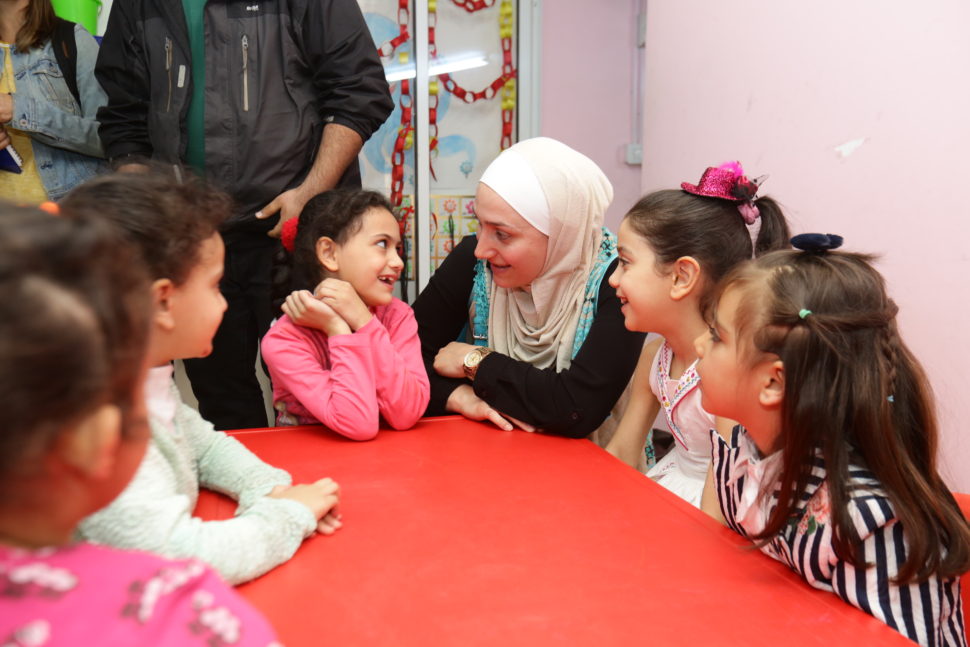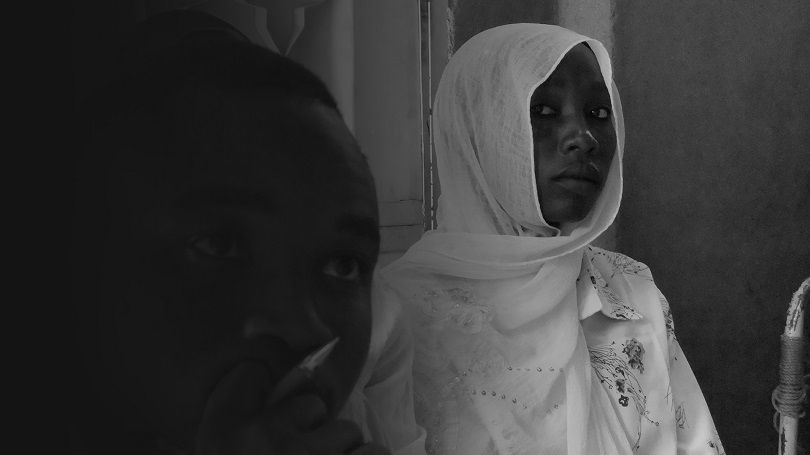War Child Sister Agency Receives Recognition at United Nations
War Child USA’s sister agency in Holland, War Child Holland, is bringing quality education to children in war zones across the world through its ground-breaking Can’t Wait to Learn program – a fast, effective and low cost gaming technology that is transforming the future of children affected by war.
Can’t Wait to Learn is an innovative education solution for young, war-affected children, whose access to quality schooling is either extremely limited or non-existent. It uses tablets and digital gaming to teach children how to read and count. The educational games allow children to have fun and learn at their own pace. After completing a series of games and lessons, the software automatically unlocks new exercises at a higher level – making it possible for children to progressively acquire new skills. Research has shown that Can’t Wait to Learn has seen children’s math and reading improve by up to three times the rate of traditional teaching methods. War Child Holland has deployed this technology in Uganda, Lebanon, Jordan and Sudan.
Earlier this month, Can’t Wait to Learn Programme Director Kate Radford presented the project to the United Nations Multi-Stakeholder Forum on Science and Technology for Sustainable Development at the UN Headquarters in New York. Following Kate’s success in New York, we caught up with her to find out how this innovative technology could close the education gap for millions of children caught up in war and what War Child Holland’s plans are for extending the program’s reach.
———-
Could you tell us why you think this program is so important?
For some children gaining basic literacy and numeracy skills through Can’t Wait to Learn can be their only chance for an education. Take 14 year old Mahmoud, whose family fled from Syria to Jordan. He has never been to school, and spends most of his time working to support his family. Mahmoud comes to a UNICEF-supported learning centre every morning to use War Child’s Can’t Wait to Learn tablet-based learning software. “I have an hour class every day, playing with the tablet. I learnt a lot of new things using the game. I’m enjoying knowing how to calculate. I know how to add and subtract numbers. The teachers guided us in the beginning on how to use the tablet, and now I know how to do everything by myself. I am moving through the game levels quickly.”
Could you tell us what prompted you to develop such an innovative program?
The idea of using technology to help reduce the number of out-of-school children first came from Dr. Aiman Badri, from Ahfad University for Women in Khartoum; the initial champion of the programme in Sudan, where it started as a pilot called e-Learning Sudan. We could see that the demand for education, from children and their parents alike, was high, and we also knew from research that serious digital game-based learning can achieve higher cognitive gains and a more positive attitude towards learning than traditional teaching methods. In humanitarian crises large numbers of children cannot attend school, classes are overcrowded and teachers are overburdened. Digital game-based learning can be a really effective solution to bridge the education gap in these situations. It is cost-effective, accessible and enables children to work at their own speed and difficulty levels. Research shows that games allow the brain to work more effectively and for longer periods of time. And crucially, as motivation is key to learning and games are designed to be highly motivating, the potential for learning is higher. What’s not to love?!
How integral are the children in designing the program?
The secret ingredient! Now this is where Can’t Wait to Learn really stands out from other education technology models. It is designed for children, by children! Knowing that effective digital game-based learning is rooted in accurate cultural themes which mimic reality as closely as possible, the foundation of all Can’t Wait to Learn games is the game design co-creation process we go through with the children we’re designing for. Face to face games and discussions along with children’s artwork in the form of drawings, Lego constructions and modelling-clay sculptures form the basis of the game world in each context. We’ve developed and refined the co-creation process to ensure that each and every game looks, sounds and feels like the world the children are living in and recognise, from the characters and their names, clothing and vocations, to the locations in each game world. There is nothing quite as inspiring as seeing children’s designs brought to life.
How have you proven that it works?
Yes! We’ve undertaken rigorous research, with the results showing that children learn, and they learn fast! In Sudan, children participating in Can’t Wait to Learn improved nearly twice as much in maths and almost three times as much in reading as those using traditional approaches. They also learned at roughly twice the rate of their peers in government alternative learning programs. In Lebanon, on average children playing Can’t Wait to Learn improved their math mastery score by 7% in just twelve weeks.
Some people may think that tablets are an expensive way of delivering education – what would you say to them?
It’s not surprising some people might think that, but our research also includes determining the cost of delivering Can’t Wait to Learn in comparison with other alternative education approaches. In the small-scale trials conducted so far – which included considerable research costs – the cost per child has been around $400. However, plans to go to scale in Sudan would bring this figure down to around $30. At $30 per child per year, Can’t Wait to Learn is cheaper than government schooling in any of the countries it is active in, with the Ugandan government spending around $44 per child, Sudan $76, Jordan $560 and Lebanon $1,170.
How do you charge the tablets when there is little infrastructure in a country?
Solar powered charging stations ensure that the tablets are fully charged and ready to be played during every session. In the future, we’re looking into how these charging stations can be produced locally, both to cut costs further and stimulate the local economy.
Don’t the tablets and headphones break easily?
We’ve invested time in testing different hardware, to find out which models of tablet and headphones are best suited for each context. We also train local partner IT and project staff in basic hardware and software problem solving skills, and they can also access support from War Child’s helpdesk.
And you have won a number of awards for the program, right?
Yes! We’re really honored to have been awarded the 2018 UNESCO King Hamad Bin Isa Al-Khalifa Prize for ICT in Education, as well as the 2018 Public Award for Best Innovation from the Dutch Coalition for Humanitarian Innovation. Can’t Wait to Learn has also been selected as a finalist in the 2019 Games for Change Awards under the category, ‘Most Significant Impact’.
Where is the program currently running and what are your plans for expansion?
Can’t Wait to Learn is currently helping children access education in Sudan, Jordan, Lebanon and Uganda. We’re about to start up in Chad, working closely with UNHCR and our NGO partner Jesuit Refugee Service (JRS). Our future plans for scaling up Can’t Wait to Learn are very ambitious! But they’re based on having the evidence to show that it’s a solution that works and can be easily scaled at a reasonable cost. We’re also exploring start-up in Colombia within the next year. South Sudan, Burkina Faso, Kenya, Mali…the approach can be adapted to the context and stakeholder landscape pretty much anywhere. Our aim is to reach 1,500,000 children by 2023. How incredible would that be, to think that many children could be on the path to a brighter future thanks to playing Can’t Wait to Learn?!


